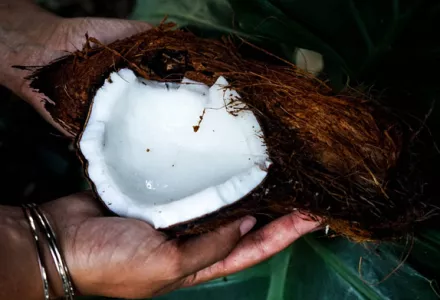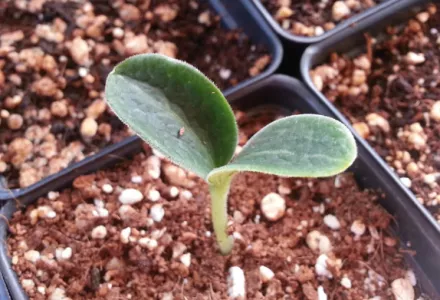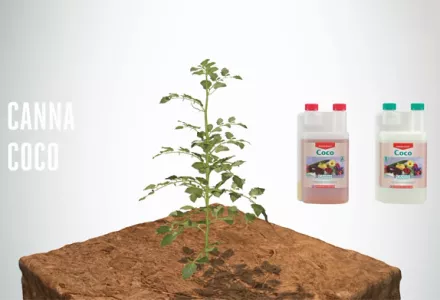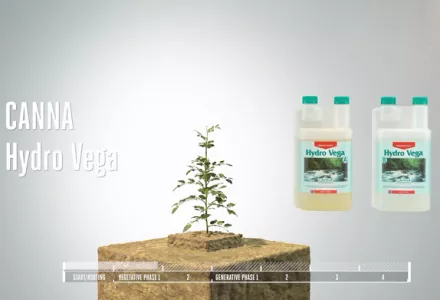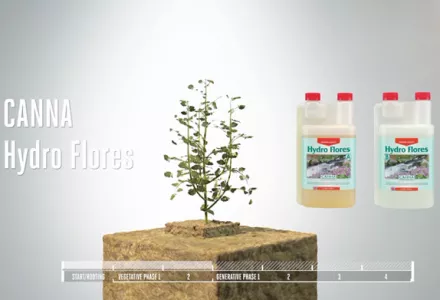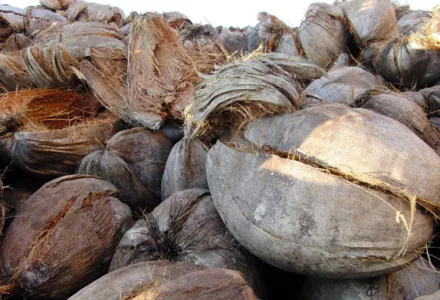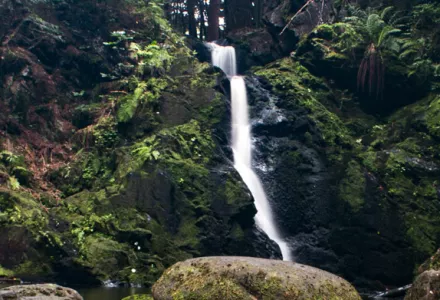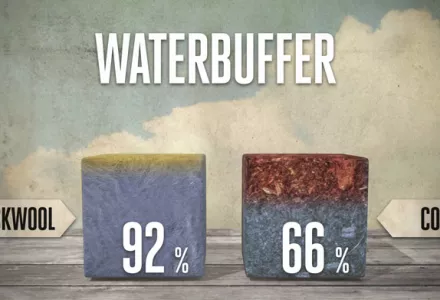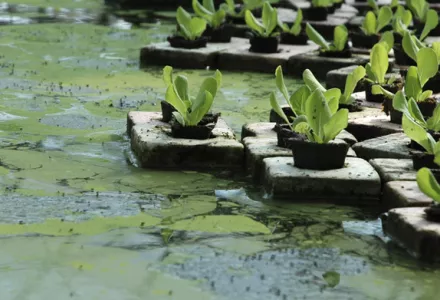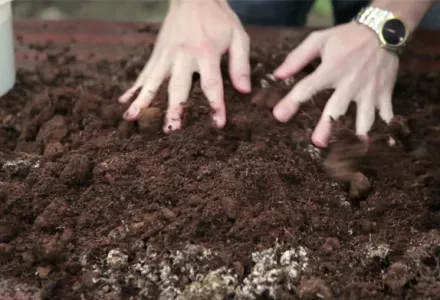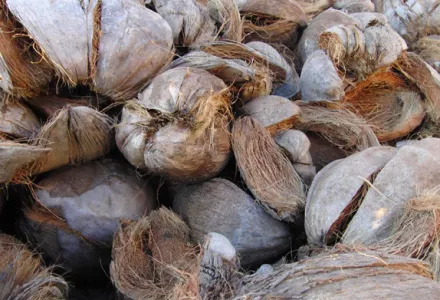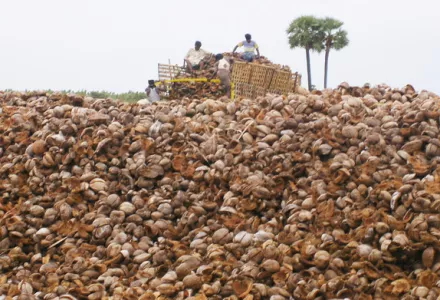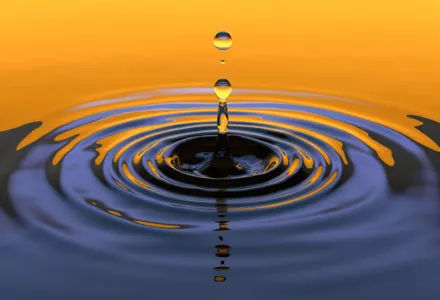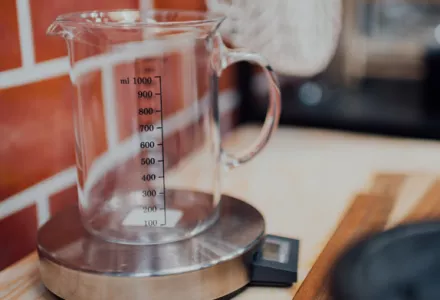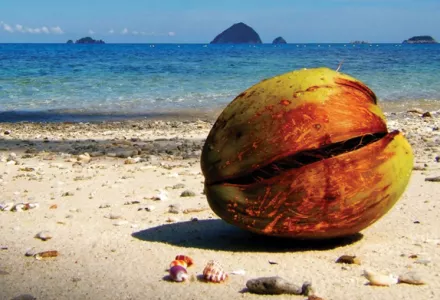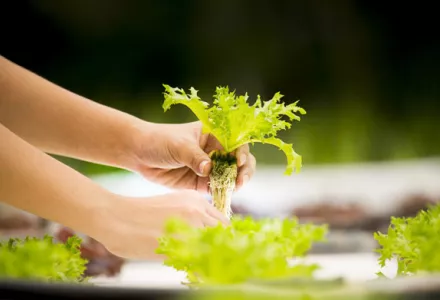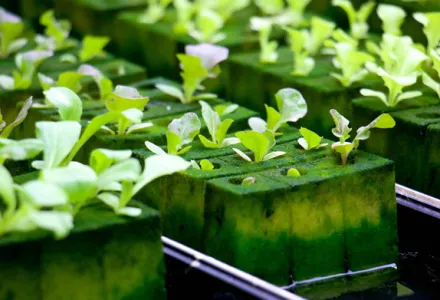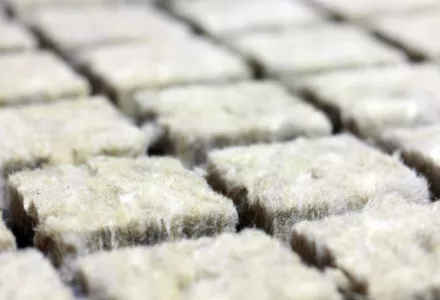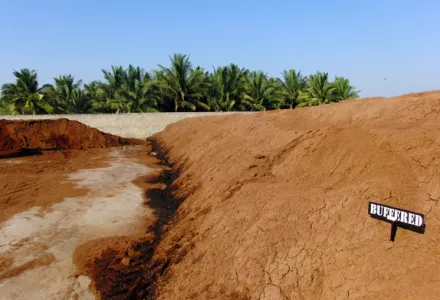Thanks to the development of 'soilless culture', horticulture has expanded into different regions, enabling farmers to produce high yields and produce high quality crops, even under adverse growing conditions. The first term used for soilless growing medium systems was 'hydroponics' by William Frederick Gericke in the 1930s. This term describes the method of providing mineral nutrient solutions (dissolved fertilisers in water) to support plant growth and development in the absence of soil. The term was later changed to soilless medium cultivation since the major constituent of the medium may be a solid or liquid, with organic or inorganic substrates. In principle the soilless medium is a substrate that is part of an artificial system of cultivation in which plants are grown without soil. The medium provides plants with physical support, regulates the water flow, serves as reservoir of nutrients and permits gas exchange to and from the roots.
Soilless culture systems are classified according to the type of substrate (soilless medium) they use, how the nutrient solution is delivered to the plants (drip irrigation, flowing or stagnant nutrient solution) and what happens to the solution after it drains away such as open (free drain) or closed (recirculating water). Soilless media can be inorganic (e.g. sand, gravel, pebbles, perlite, rock wool, vermiculite), organic (e.g. rice hulls, peat, sawdust, straw, coconut coir) or synthetic (e.g. foam ship, sponges, moisture absorbent plastic fibre). Thanks to the range of soilless media, horticulture has developed around the world, enabling farmers to produce food and ornamental plants with high yields and to sell high-quality commodities (Gruda, 2009).
The quality of a soilless medium involves many indicators and its assessment varies from one region to another, depending on the opinions of individual farmer as well as their management goals such as productivity, quality, waste recycling and/or sustainability. As for what makes a soilless medium a good growing medium, the physical, chemical and biological properties should be considered when assessing the functioning of the system.
Basic requirements for a good growing medium
Soilless growing mediums are used for horticultural purposes around the world. The selection of indicators is less complex than for soils, since soil has multiple uses (e.g. agriculture, forestry, engineering, recreation, construction, etc.), according to its physical and chemical properties. For instance, the quality of soil destined for construction purposes will be very different from that of soil that is good for agriculture. The indicators that define a good growing medium will always be for agricultural purposes.
Many types of soilless growing medium are used in horticulture and selection will depend mainly on the expertise and experience of the grower, availability and cost. As part of the seventh framework programme of the European Union, the EUPHOROS project (Efficient Use of Inputs in Protected Horticulture) (Pardossi et al., 2011) mentions that the ideal soilless medium should have some physical and chemical properties as follows:
- A uniform texture that drains well but retains nutrients and water for the root system.
- Low bulk density to facilitate installation and transportation (between 190 and 700 kg/m3).
- High porosity (between 50% and 85%).
- Particle-size distribution to maintain good balance between air and water retention (between 0.25-0.5 mm).
- A pH between 5.0 and 6.5, which can also be adjusted easily.
- Low content of soluble salts.
- Chemical inertia which means that the substrate does not affect the nutrient solution by releasing inorganic ions or immobilising nutrients.
- Ability to maintain original characteristics so that it can be used for many successive cultivation cycles.
- Absence of pathogens and pests (but not necessarily sterile), and free of any compounds toxic to plants.
- Ability to be produced in uniform batches (to allow the use of consistent fertilisation programmes).
Besides these qualities, another characteristic of a good-quality soilless growing medium is its ability to recover from growers’ mistakes such as overwatering or over-fertilisation, as mentioned by Stan Claasen (a Dutch horticultural grower - personal communication).
A comparison between the main physical and chemical characteristics of the most commonly used soilless growing media (see table 1) gives an overview of the possible advantages and disadvantages of using one or other substrates, besides the interesting possibility of combining them.
Table 1. Physical and chemical characteristics of soilless mediums (adapted from Johnson (year unknown); Abad et al., (2005) and Asiah et al., (2004)).
| Substrate | Bulk density | Water retention | Porosity | Cation exchange capacity | Decomposition rate (C:N) |
|---|---|---|---|---|---|
| Bagasse | Low | High | Low | Medium | High |
| Sawdust | Low | High | Medium | High | High |
| Rice hulls | Low | Low | High | Medium | Medium |
| Vermiculite | Low | High | Medium | High | Low |
| Peat moss | Low | High | High | High | Medium |
| Bark | Low | Medium | Medium | Medium | Medium |
| Coconut / Coir Dust | Low | High | High | Medium | Low |
| Sand | High | Low | Medium | Low | Low |
| Units | (g/cm3) | % | % | (meq/100g) | ratio |
| Low: | 0,25 | 20 | 5 | 10 | 1:200 |
| Medium: | 0,25 - 0,75 | 20-60 | 5-30 | 10-100 | 1:200 - 1:500 |
| High: | 0,75 | 60 | 30 | 100 | 1:500 |
When using bagasse (made from sugar cane pulp waste) alone, for instance, its high rate of water retention and low porosity will lead to poor aeration and drainage. On the other hand, rice hulls have low water retention and high porosity which leads to plant water stress if it is used alone. Both rice hulls and bagasse have a high decomposition rate and therefore require high nitrogen fertilisation input to avoid competition between micro-organisms and the plants to for nitrogen. When looking at the characteristics of each soilless medium, a combination of these can usually provide a satisfactory alternative for growers. However, combining substrates should not simply be done on the basis of availability and cost reduction, and should take account of basic properties like those mentioned in table 1.
When the growing medium supports plants and regulates water flow
Bulk density reflects the ability of the medium to function as a structural support, water and solute movement, and aeration. It expresses the weight of the soil or medium particles in terms of volume. The solids and pore space are thus considered together as the weight of the soil or medium. If the pore space is very low, the soil or growing medium will easily suffer from compaction (figure 1).

Mineral soils have an average of 1400 kg/m3 bulk density with about 47% pore space. This compares with soilless growing media like sphagnum peat and vermiculite which have a bulk density of 125 kg/m3 and around 93% pore space, or coconut coir dust with a bulk density of 40 to 80 kg/m3 and approximately 87.5% of pore space (Argo, 1998). The figures demonstrate the large difference in bulk density and pore space between soils and soilless growing medium, with soils being the heaviest growing media while the lightness of soilless media allows easy handling and transportation; however this does affects other indicators such as porosity and water retention.
A combination of low porosity and high water retention would lead to poor aeration and drainage. By contrast, high porosity and low water retention would lead to water stress in the crops. These are important indicators for growing media, which should have a good balance in order to optimise the flow of nutrient solutions to the plant. In naturally occurring soil, these indicators are more difficult to control due to slope, texture and climatic conditions.
During cultivation, the indicators mentioned above (porosity and water retention) may change due to the decomposition of the organic matter, root activity, the swelling and shrinkage of the substrate particles and the process of compaction. However, physical modifications may only occur after one or two growing cycles depending on the nature of the substrate and type of crop, allowing the growing medium to be re-used (Pardossi et al., 2011).
There is an ongoing debate among scientists, some of whom state that crop yield is affected when growing medium is re-used, while others affirm that the differences are almost negligible. Based on the physical properties of the growing medium, the concept of 'reusing the substrate' is often based on ‘green’ arguments, while profitability prevails as the main objective among growers.
When the growing medium serves as a reservoir for nutrients
Soils contain very diverse ecosystems of micro and macro-organisms, including plant communities. The complex interaction between them is balanced, allowing plants and animals in the soil to survive or recover without human intervention. Production yields may, however, be as high as growing in soilless growing medium where human intervention is required.
The main difference between soilless growing media and soil is the presence of soil biota diversity and organic matter. In soil, the amount of organic matter is the most important indicator of soil quality. When organic matter enters the soil, for instance like manure or crop residues, the carbon compounds in the substrate are broken down at different rates. This degradation process varies according to the properties of the organic matter introduced, the populations of the soil biota (organism living in the soil) and the physical and chemical circumstances (moisture content, temperature, pH, etc.) which affect the breakdown, decomposition rate and release of nutrients. The more the decay, the 'better' the soil, the more active the soil biota and the richer the biological rewards for the crop (Janzen, 2006).
Growing medium lacks soil biota and organic substrates, which sometimes provide organic matter but are generally not degraded thoroughly.
The lack of soil biota and easily decomposable organic matter in soilless culture means that a constant supply of nutrients needs to be provided through the nutrient solution, while in soils the nutrients are released as organic matter decomposes. This means that indicators like water retention and porosity are more relevant for soilless growing media. Nutrient solutions are the key element in the irrigation systems of soilless culture. They contain micro and macro nutrients dissolved at different concentrations. Standard formulas have been developed for many crops such as tomatoes, cucumbers or strawberries; however, these can be adjusted according to the prevailing climatic conditions (due to surface evaporation water from the growing media and temperature), water quality, location and stage of the crop.
Chemical inertia is another characteristic of growing media that constitutes a significant difference with mineral soils. In principle, not all elements need to be applied to mineral soils while for soilless media growers must supply all nutrients, except for carbon, hydrogen and oxygen because these are derived from water and air. As a consequence, the continuous application of nutrient solution in soilless culture systems leads to salt accumulation and ionic imbalances in the substrate.
As mentioned previously, the continuous applications of nutrient solution, especially in closed irrigation systems, can lead to the rapid accumulation of sodium and chloride and a change in the initial pH and imbalance in the desired nutrient supply for the plants. Consequently, the electrical conductivity (EC), or the concentration of toxic elements, increases and can threaten plant development. Open irrigation systems represent an alternative in order to slow the problem of salt accumulation but this involves a massive waste of water and nutrients, which increases production costs and contaminates local ground and surface water (Pardossi et al, 2011).
The continuous dilemma between increasing productivity and protecting the environment underlies the European Nitrate Directive (1991), which suggests applying closed irrigation systems to encourage sustainable horticulture, especially in response to concern over high nitrate concentrations in drainage water from soilless culture. The recirculation of nutrient solutions would be advisable until electrical conductivity and/or the concentration of potentially toxic ions reach a maximum acceptable value. Afterwards it is recommended to replace (partially or totally) the irrigation system.

A healthy growing medium and the environment
The disposal of used soilless media following cultivation is a potential threat to the environment as these may contain pesticides, plastic or crop residues with diseases that can be spread (Pardossi et al, 2011). Re-use of the medium is strongly recommended to reduce disposal and production costs but the potential dissemination of soil-borne diseases remains a major concern.
Biological control agents are sometimes added to soilless growing media in order to introduce a microbial community and prevent pathogen populations; however, this is not a guaranteed to prevent pathogens (Pardossi et al, 2011). Soil has a very complex microbial community web that can support both pathogenic but also beneficial organisms. Their constant interaction creates an equilibrium in the soil that allows plant growth; without soil to act as a buffer, any failure of pathogenic control or prevention leads to a rapid fall in yield. Special attention to preventing root pathogens is required in soilless culture.
If the grower re-uses the substrate in order to reduce waste, preventing pests and diseases in new cultivation cycles becomes a more relevant and expensive issue, while solving problems relating to excessive salinity and pH is easier. Practices like steaming and solarisation, or chemical control (the application of fungicides) are the most common methods for treating growing media so that it can be recycled.

Conclusions
To answer the general question of 'what is a good quality soilless growing medium?' many factors must be considered, including the objectives of the grower, the regions that the substrate comes from as well as where it is going to be used and the type of substrate. Thus, to give a general answer is difficult and unrealistic.
We have discussed physical, chemical, biological and practical properties in order to define a desirable soilless medium. Essentially, the substrate should be able to:
- Provide structural support for the plant.
- Regulate water flow.
- Serve as reservoir of nutrients.
- Provide a healthy environment for the plant grow in.
To sum up, the characteristics that indicate a good-quality growing medium are as follows:
Physical aspects include a low bulk density (between 190 to 700 kg/m3), high porosity (between 50% to 85%), particle size between 0.25 to 0.5mm and water retention between 20% to 60%.
Chemical aspects represented by the CEC (range between 10to 100 me/100g), pH easily adjustable (5 to 6.5), low salt content (0.75 to 1.9 dSm-1) and a C:N ratio between 1:200 to 1:500.
Biological aspects indicate the healthy condition of the growing medium due to the absence of pathogens and pests, and the absence of toxic compounds.
Practical aspects such as the capacity of the growing medium to recover from growers’ mistakes, its ability to maintain its original characteristics (suitable for reutilisation), and whether it can be produced in uniform batches are relevant in choosing a good soilless growing medium.

